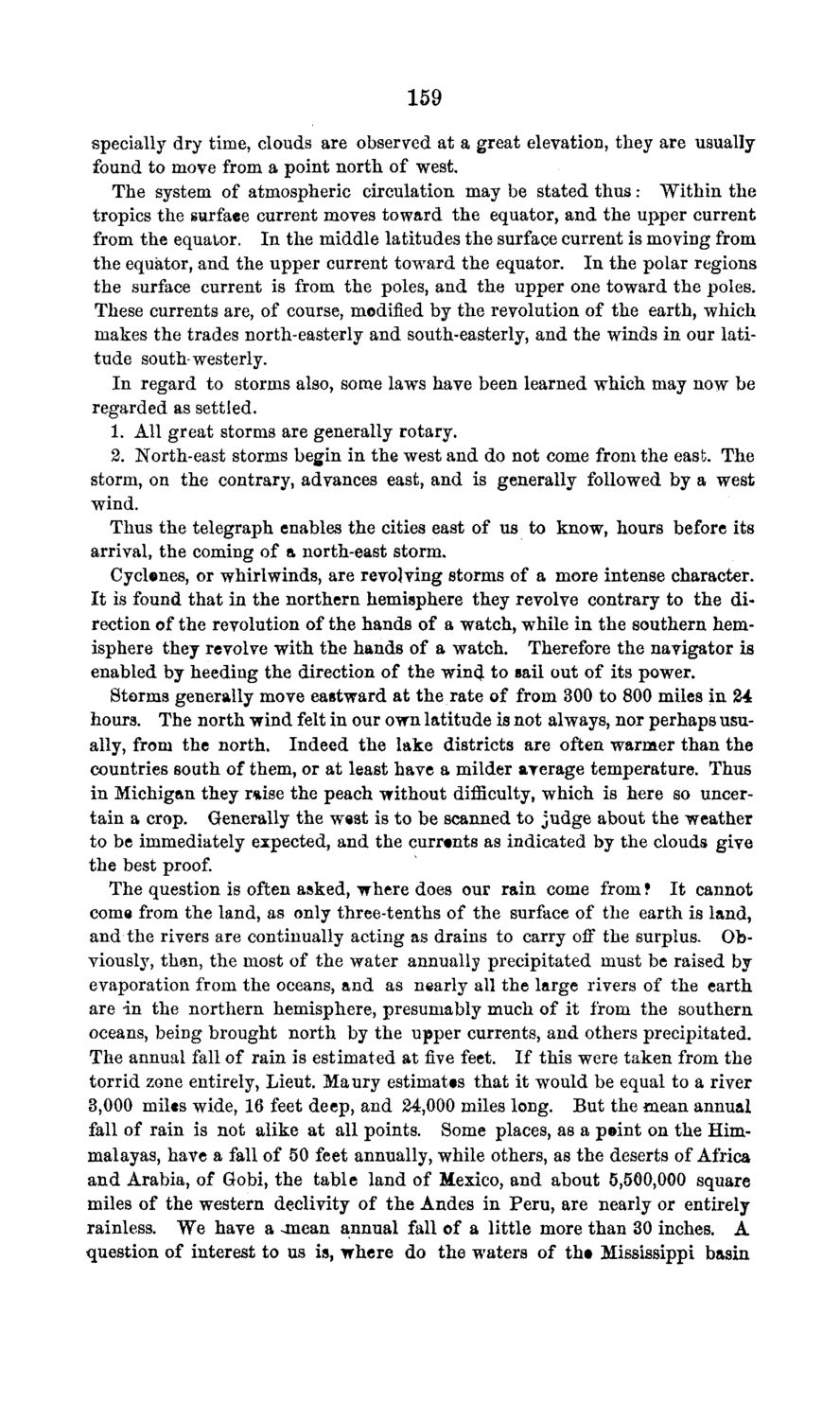| |
| |
Caption: Board of Trustees Minutes - 1869
This is a reduced-resolution page image for fast online browsing.

EXTRACTED TEXT FROM PAGE:
159 specially dry time, clouds are observed at a great elevation, they are usually found to move from a point north of west. The system of atmospheric circulation may be stated thus: Within the tropics the surface current moves toward the equator, and the upper current from the equator. In the middle latitudes the surface current is moving from the equator, and the upper current toward the equator. In the polar regions the surface current is from the poles, and the upper one toward the poles. These currents are, of course, modified by the revolution of the earth, which makes the trades north-easterly and south-easterly, and the winds in our latitude south-westerly. In regard to storms also, some laws have been learned which may now be regarded as settled. 1. All great storms are generally rotary. 2. North-east storms begin in the west and do not come from the east. The storm, on the contrary, advances east, and is generally followed by a west wind. Thus the telegraph enables the cities east of us to know, hours before its arrival, the coming of a north-east storm. Cyclenes, or whirlwinds, are revolving storms of a more intense character. It is found that in the northern hemisphere they revolve contrary to the direction of the revolution of the hands of a watch, while in the southern hemisphere they revolve with the hands of a watch. Therefore the navigator is enabled by heeding the direction of the win4 to sail out of its power. Storms generally move eastward at the rate of from 300 to 800 miles in 24 hours. The north wind felt in our own latitude is not always, nor perhaps usually, from the north. Indeed the lake districts are often warmer than the countries south of them, or at least have a milder average temperature. Thus in Michigan they raise the peach without difficulty, which is here so uncertain a crop. Generally the west is to be scanned to judge about the weather to be immediately expected, and the currents as indicated by the clouds give the best proof. The question is often asked, where does our rain come from ? It cannot come from the land, as only three-tenths of the surface of the earth is land, and the rivers are continually acting as drains to carry off the surplus. Obviously, then, the most of the water annually precipitated must be raised by evaporation from the oceans, and as nearly all the large rivers of the earth are in the northern hemisphere, presumably much of it from the southern oceans, being brought north by the upper currents, and others precipitated. The annual fall of rain is estimated at five feet. If this were taken from the torrid zone entirely, Lieut. Maury estimates that it would be equal to a river 3,000 milts wide, 16 feet deep, and 24,000 miles long. But the mean annual fall of rain is not alike at all points. Some places, as a p©int on the Himmalayas, have a fall of 50 feet annually, while others, as the deserts of Africa and Arabia, of Gobi, the table land of Mexico, and about 5,500,000 square miles of the western declivity of the Andes in Peru, are nearly or entirely rainless. We have a 4nean annual fall of a little more than 30 inches. A question of interest to us is, where do the waters of the Mississippi basin
| |